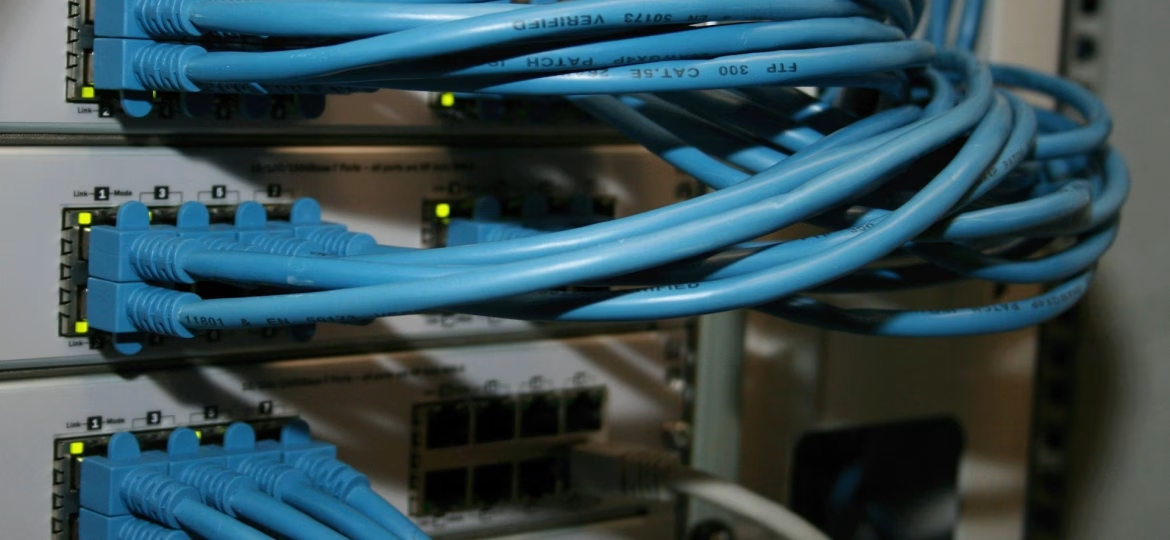When someone clicks on your website or opens your app, they don’t think about the physical distance between them and your servers. But if that distance is too big, or the path between them is too slow, visitors will feel it. That sluggish page load or lag while using a service often comes down to one main issue: network latency. For businesses with users across the UK, especially if you’re hosting in London, trimming down latency can mean smoother interactions, quicker load times, and happier users.
Having your infrastructure closer to your audience makes a big difference. Dedicated server hosting in London gives UK businesses a solid foundation to improve performance, especially for systems that rely on real-time responses like AI-powered applications, cloud-hosted tools or email services. So if your London server setup isn’t performing as fast as it should, latency could very well be the reason behind that slow crawl.
Understanding Network Latency
Latency is a term that gets thrown around a lot, yet it often remains misunderstood. Simply put, it’s the time it takes for data to travel from one point to another and then to travel back. In server hosting terms, it’s the pause between a user making a request and receiving a response. The longer the delay, the worse the experience.
For users based in or around London, long delays often happen when servers are located far away or when the infrastructure between the user and the data centre is poor. Common latency issues include:
- High traffic on the network
- Poor routing paths between data centres
- Outdated server hardware or software
- Congested or oversubscribed services
- Hosting in locations outside the UK
Now more than ever, latency matters. Businesses running GPU dedicated servers for things like AI modelling need fast data speeds to process large volumes of information almost instantly. A few seconds of delay at the wrong time can disrupt workflows or even compromise real-time outputs. It’s just as frustrating for VPS users or people using webmail when their inbox takes too long to refresh. Nobody likes waiting around unnecessarily.
Having low latency helps in several ways:
- Faster data returns for AI or machine learning models
- Improved experience for VPS users accessing hosted software
- Quick and smooth load times for cloud-hosted applications
- Reliable delivery and syncing of email services
- Better performance for users based in the UK or nearby
These improvements build the groundwork for a consistent, high-quality digital experience. It also reduces chances of page abandonment or application dropouts, which users often do without thinking. With the right infrastructure, even small businesses can meet high demands at speed.
Solutions To Reduce Network Latency
Improving latency doesn’t have to be complicated, but it does require careful server placement, thoughtful network design, and the right tools. A server’s physical location plays a major role. If your customers or users are based in the UK, it makes sense to pick a data centre based here too. That way, data has less distance to travel and can take shorter network routes.
Dedicated server hosting in London ticks this box by cutting down the miles that data has to move. It also avoids slow and costly international routes, which can easily delay interactions. But it’s not just about where the server sits, it’s also about how that server’s set up.
To keep latency low, consider:
1. Choosing a server close to your user base
2. Using modern hardware with high bandwidth capacity
3. Upgrading server firmware and keeping systems updated
4. Deploying CDN services for delivery of static content
5. Relying on peering relationships that connect data centres directly
On top of that, some setups need more firepower than others. AI tools, for example, often run on GPU dedicated servers, which need high-speed data access to perform smoothly. Public cloud hosting, commonly used for scaling business systems, also benefits from short latency. The ability to access resources quickly without interruption is key for staying responsive.
The same logic applies to VPS and email hosting. Nobody wants to wait 10 seconds just to open their calendar or track a delivery. A quick server response feels professional. And for many users, it’s the baseline they expect from any business. When latency is low, everything just feels smoother.
Benefits Of Low Latency For Various Hosting Needs
Latency doesn’t impact every system the same way. For setups running AI tools or machine learning processes, there isn’t much room for lag. These systems rely on rapid data transfer and instant access to large volumes of information. GPU dedicated servers help make that possible by supplying the high-speed infrastructure those applications need, but that power gets limited if latency stays high.
Even less complex services like email hosting can feel the strain. Whether it’s syncing across devices or receiving updates in real time, response time matters. If it’s slow, your inbox reflects it. VPS hosting also sees a direct benefit from reduced latency. Since virtual servers often host applications, sites, or internal systems, a delay in one place is quickly felt across the board. Flat performance hits productivity and can cause confusion when systems lag behind user actions.
Public cloud services aren’t immune. These platforms are often praised for their flexibility and scale, but none of that matters much if actions feel delayed. Speed becomes the anchor that holds the entire virtual setup together. So when latency goes up, that anchor slips.
Let’s say you’re working from Liverpool and trying to train an AI model on a dedicated server located in a US-based data centre. That delay between every update, batch, or parameter tweak will start to add up. Move that workload to a London-based server and the reaction time improves almost instantly. Your productivity ticks up without much adjustment to the actual application itself.
So whether you’re dealing with AI operations, hosting live dashboards, managing emails, or streamlining user access to cloud platforms, lower latency tightens up performance and improves user satisfaction across the board.
Implementing Latency Solutions With Binary Racks
Once you’ve identified that latency is affecting your performance, it’s time to address it at its core. That starts with a location-focused strategy. Hosting in the UK, especially in a major hub like London, puts your infrastructure closer to both users and business operations. Local data centres reduce the number of hops it takes for data to reach its destination, which naturally frees up speed and reduces errors during transmission.
Moving infrastructure within UK borders also has practical benefits. From maintenance to real-time support, having your servers nearby helps both response time and service quality. And when hosting services follow ISO standards, you also gain peace of mind about security and performance expectations being met.
Here’s a quick breakdown of smart moves to make latency improvements stick:
- Host your dedicated server in London to stay close to UK-based clients and users
- Opt for GPU-enabled hardware if you’re running intensive tools like AI models
- Keep data within your public cloud environment structured and well-optimised
- Tune core systems like VPS setups to support updates and communication protocols
- Pick an email hosting setup that handles large volumes with ease and syncs fast across devices
Implementing these steps properly will help balance performance, predictable speed, and the flexibility modern businesses expect.
Speed Starts With Smart Hosting
Everything online moves at a pace users are no longer willing to wait around for. If something loads slowly or lags without clear reason, people tend to move on quickly. That’s why network latency should be on every business’s radar, especially if they rely heavily on responsive systems.
Hosting in a city like London offers more than just a central UK location. It acts as a foundation for dependable speed, helping digital systems perform like they should. Whether you’re building complex AI tools on GPU dedicated servers or providing round-the-clock services through email and public cloud platforms, speed matters.
Deploying the right latency solutions local to your users doesn’t have to be complicated. Sometimes it’s about making the small, practical changes that lead to a big shift in performance. With the right strategy, your service can start running smoother than ever.
To make sure your infrastructure meets the demands of modern applications and delivers an impeccable user experience, consider upgrading to dedicated server hosting in London. Binary Racks is here to support your hosting needs by offering reliable and high-performance solutions that match the energy and speed of your business. Take the leap and discover how seamless hosting can elevate your digital presence.






